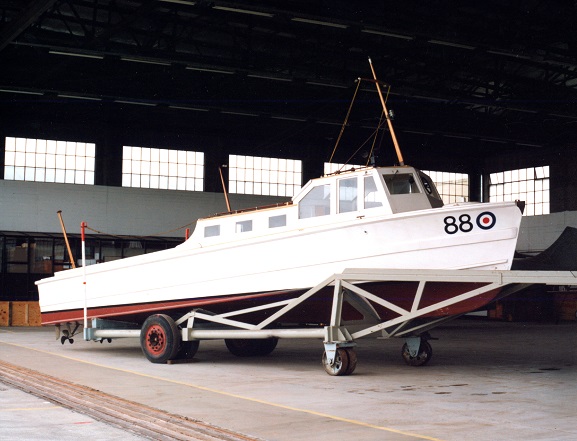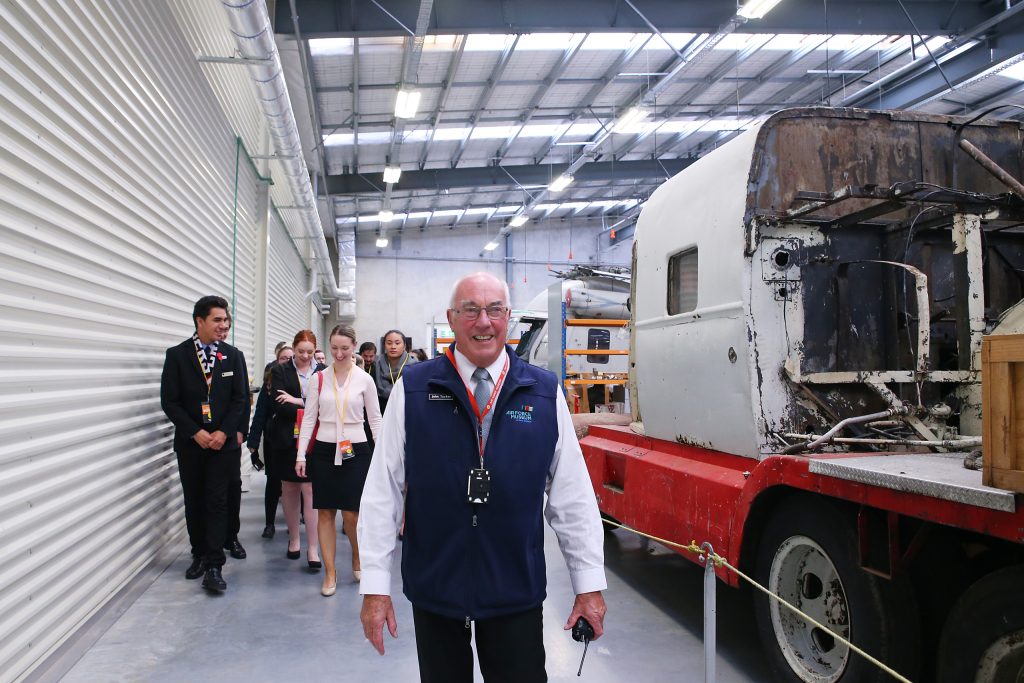When thinking about the Air Force, boats are probably not what first springs to mind, yet once upon a time the RNZAF had its own maritime branch, which included a fleet of small vessels.
The operation of seaplanes and flying boats in the RNZAF’s early days, and their widespread use throughout the Pacific during World War Two through to the mid-1960s presented a unique set of challenges. For a start, operating with water as your taxiway meant that all the usual ground-based support vehicles were uselesss. Boats had to be used instead, for ferrying passengers to and from the aircraft, loading and unloading cargo, refuelling and rearming, and support in the case of an emergency.
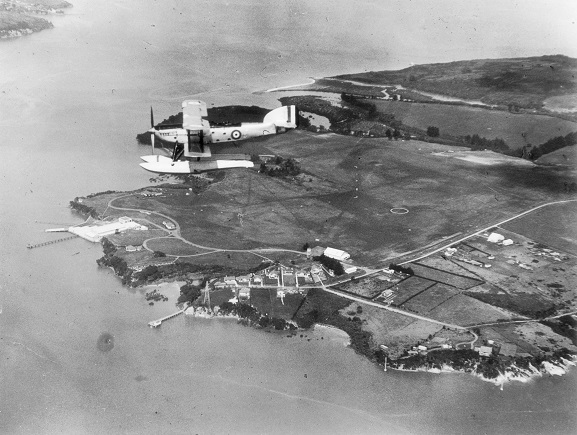
To cater to the specific needs of flying boat operations, the RNZAF established its own Marine Section. The first Marine Section unit was established in 1928, providing small craft to support the Cutty Sark, Supermarine Walrus and Fairy IIIF aircraft operated by the New Zealand Permanent Air Force at Hobsonville. The first craft believed to be operated by the fledgling Marine Section was an 8-metre long unnamed vessel affectionately referred to as Gertie. Alongside Gertie, the Marine Section operated a few small dinghies and one yacht. These craft were not officially named, or even numbered, as presumably the low number of vessels meant they were easily identified.

In late 1939, the RNZAF purchased its first high speed launch similar to those operated by the Royal Air Force (RAF). The arrival of this craft in 1940 marked an increase in the number of vessels the Marine Section operated and the beginning of a numbering system to identify them. Each craft was assigned a number with the prefix “W”. Interestingly the ‘W’ was never painted onto the vessels, only the number. Designated ‘W1’ the launch pictured below was built by British Power Boats Ltd at Hythe in the United Kingdom. At 19.5 metres long, it was powered by three Power-Napier Lion W-12 petrol engines and capable of a top speed of 38 knots (70kph). W1 was by far the fastest launch of its size operated by the New Zealand military at the time, with comparable Navy craft capable of reaching speeds of only 19 knots (35kph). This launch served as an air-sea rescue boat and provided target towing support for coastal artillery batteries. It travelled regularly from Hobsonville to Wellington and as far south as Lyttleton to support coastal artillery battery training exercises. W1 was also involved in rescuing survivors from the Niagara when it was sunk by a mine in the Hauraki Gulf on 19 June 1940.
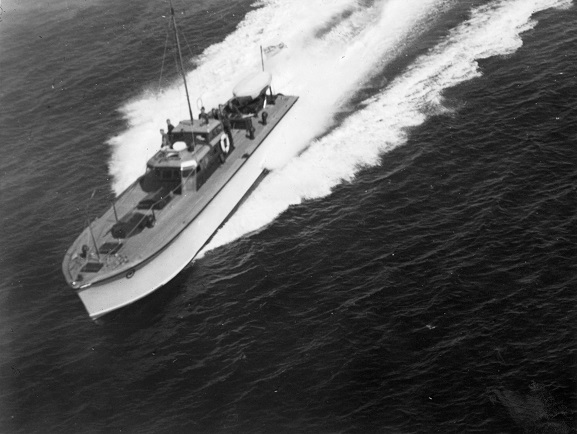
In 1942 W1 was joined by the first three purpose-built crash/control boats to be constructed in New Zealand. Of similar design to the equivalent operated by the RAF, these craft were designed specifically to operate as control launches, which maintained radio communication with flying boats and ensured their take-off and landing path was clear of obstacles and floating debris that could easily damage the thin hulls of the flying boats. They were also responsible for laying flare strips to illuminate the flying boats’ paths during low light or night-time take-offs and landings. Before the building of these custom-made launches, the Marine Section swelled its ranks through the requisition of civilian boats to support the war effort, converting them for military purposes. At its peak during World War Two, the RNZAF Marine Section was operating hundreds of vessels across New Zealand and the Pacific, including launches, towboats, powered and unpowered barges, dinghies and punts.
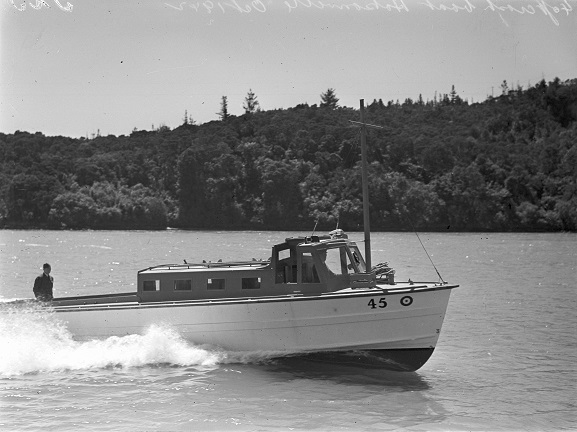
Marine Section duties were varied. Barges and dinghies were used for refuelling and rearming flying boat squadrons while launches served as control boats coordinating take-off and landing as well as rescue boats in case of emergency and passenger transport especially between Hobsonville, Whenuapai and Auckland city, but also in bases throughout the Pacific. It wasn’t uncommon for launches to be used for recreational purposes, especially in places like Fiji, with service personnel using them for fishing trips, excursions and other less official, but slightly more fun, trips.

One other important duty performed by the Marine Section was supporting coastal artillery battery firing practice. A launch would tow a target far enough behind for the boat to be safe and the coastal batteries would fire upon it, honing their gunnery skills. Practice like this was vital to ensure that these key defensive positions were prepared for potential enemy incursions during World War Two but continued into the post-war years with the looming threat of the Cold War.

After World War Two and the scaling back of the RNZAF, the Marine Section was reduced to a single base at Hobsonville with a support unit in Laucala Bay, Fiji. Its primary function remained the continued support of RNZAF flying boats, but it retained its other functions and even sent three vessels to support occupational forces in Japan. The majority of craft operated by the Marine Section were either returned to those they had been requisitioned from, transferred to the Navy, or sold. Only a small handful of vessels remained in Marine Section hands, including W1, the RNZAF’s first high speed launch purchased in 1939.

In 1962 the RNZAF entered an era of modernisation. Plans to ensure the effectiveness of the RNZAF into the future and replacements for aging aircraft, such as the Short Sunderland, the last flying boats operated by the RNZAF, were explored. The Lockheed P-3 Orion was chosen to take over the maritime patrol responsibilities of the Sunderlands. As a long-range land-based aircraft, the arrival of the P-3s signalled the end of flying boat operations for the RNZAF. On 2 April 1967, Sunderland NZ4107 made the last flying boat flight from Laucala Bay to Hobsonville.

With the phasing out of flying boat activities, the Marine Section became obsolete. The Navy had already picked up some of the transportation duties, so it made economic sense to transfer the remaining four craft, two launches and two barges, to them. In an informal ceremony on 15 January 1973, the Marine Section at Hobsonville handed these vessels over to the Royal New Zealand Navy. A few days later on the 24th, the duties and responsibilities of the Marine Section were formally transferred to the newly created Naval Air Support Unit based at Hobsonville, thereby concluding the story of the RNZAF’s maritime branch.
One crash/control launch, W88, was gifted to the Air Force Museum of New Zealand in 1992. Built around 1942, this vessel was used as a control boat for marine operations by Sunderland and Catalina flying boats. Transferred to the Navy in 1967, W88 was used as a work boat until 1984 when it was deemed beyond economic refurbishment and destined for scrap. The Marine Section Reunion Group acquired the launch in 1986 and begun their own restoration project, which continued until the completed launch was gifted to the Museum. The launch now resides here as a testament to those who served in this once vital, and often overlooked, area of RNZAF operations.
